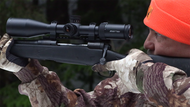This question arises a lot because there are so many scopes with so many features it's hard to choose. There was a time when a fixed three power was all a hunter needed, then came out the variable 3–9x40. It seems a 3-9x40 or similar is all a hunter needs since most game is taken under 300 yards but with technology and engineering comes more features and better quality to meet the demand for more features for hunting optics.
Questions to ask yourself before buying a hunting scope.
Ask yourself what you are hunting, varmints or big game? What kind of hunting, long-range or short-range? What is your hunting style, sitting or walking? What terrain you will be hunting, thick or open range? What is the weather like when you hunt, sunny or overcast? And ultimately, it comes down to your budget and seriousness about the sport.
Using a high-power rifle scope (magnification over ten power) for hunting?
Some hunters practice long-range shooting over 600 yards throughout the year, and they hunt animals like Mule Deer and Antelope out in open country and will get higher power scopes as they can ethically shoot game further. If hunting big game, know your limits and the limits of your rifle and ammunition, and be ethical not to take a shot that is too far. However, if you are hunting varmints, a scope with more magnification is desirable as varmints are smaller than big game, usually in overabundance, and are a nuisance.
There are some problems with higher power scopes, like light transmission at higher powers require larger objectives to get the same amount of light transmission as scopes of lower power. To compensate for that, they usually have larger objectives making the scopes heavy and bulky and will require higher scope rings moving the center of the scope further away from the bore.
If you are a hunter who moves a lot, then having a bulky, heavy scope would be less desirable, and it is better to have a simple one-inch tube with a 40mm objective. Another thing to note is if you are zoomed in too much, reducing your field of view, the recoil of your rifle can make you lose sight of the animal, so you may question whether you hit it or ran off.
An advantage to high power scopes is the ability to sort out an animal to ensure it has antlers or not, and to make sure it is standing alone with no other animal behind it. However, know your limits and base the power of your scope on that. Hunting antelope would be an excellent reason to use a higher power scope as they can be hard to get close to, and at a distance, they are hard to distinguish a buck or doe standing in a herd, whereas hunting deer in the woods would be a bad idea to use a high-power scope.
I tend to have my scope at the lowest setting when hunting through the woods. Then, if I walk into an open area, I adjust it to where I think I might see game.
Hunting with a traditional 3-9x40 or 2.5-10x40.
These are good all-purpose scopes, which is why they are so popular among hunters and have been around for a long time. Most come with a simple duplex reticle and no extra features. These scopes are suitable for hunting in the woods and open country.
Hunting with a Lower Power Variable Optic (LPVO).
LPVOs could be the next step in the evolution of hunting scopes now that they are coming in higher powers like 1-10. They can function at one power making it faster to get those close-up shots where you might jump an animal at close range and still be able to zoom in on a game animal at a distance. For good ones suited for low-light hunting, though, they can be expensive as they use a smaller objective like 24 or 28, so having high-quality glass and engineering plays a significant role. Read more about Hunting with an LPVO.
How important is high-quality glass on a hunting scope?
High-quality glass is essential for those who hunt in the early morning and late afternoon or in seasons where there is a lot of overcast. With most states shooting hours being a half hour before sunrise and a half hour after sunset, hunters may see the most game movement during the twilight hours of sunset and sunrise. Maximum light transmission and a sharp image will give a hunter an advantage.
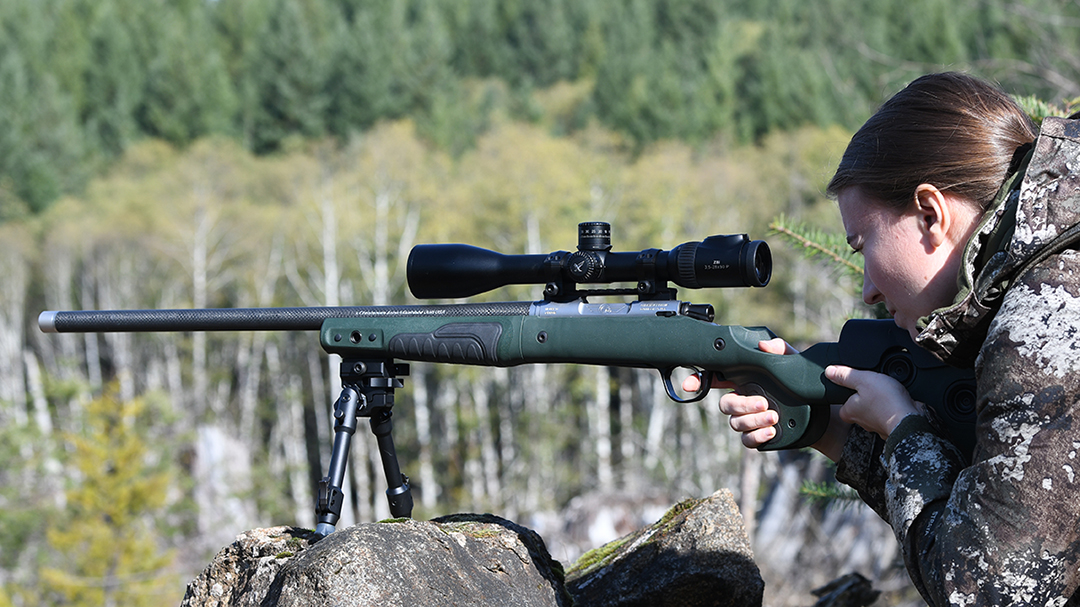
I have a couple of high-quality scopes. The rest are budget scopes. I am really into shooting and hunting but can't afford top-end scopes for everything, so the most valuable scopes go on my most essential rifles, which are my hunting rifles.
I am not a hater of "cheap" scopes. I own plenty of them, and most are surprisingly good for target practice, but I know the benefits of higher-end scope when it matters.
I have a 3-9x40 scope that retails for around $800, and this by no means is the top tier, but very impressive. I was using it on an elk hunting trip with a friend. He was hunting with a good value 3-9x40 scope well-liked by budget-minded hunters. It retails for $150. We were watching a tree line at the edge of a clearcut on a heavy overcast day, and it was starting to get dark, and he came to me and said he was done. He could not see anything through his scope. I looked through mine and said, "I see fine," and I handed it to him so he could look, and in an astonished voice, he asked, "How does it do that?" The difference was the quality of glass, coatings, and engineering. I was able to hunt longer than he could because I could still see.
There are some value scopes out there without spending a lot of money. You don't need the most expensive scope if you are a casual hunter or hunt in decent hunting conditions, but if you hunt when it's cloudy and dark all day, you have to consider the proper scope for your hunting conditions and the way you hunt.
Choosing a reticle for hunting
Standard Duplex Reticle. If most of your hunting is under 300 yards, it is all you need and has been the go-to for many years. You can also use where your bottom crosshair thickens as a drop compensator if you know where the point of impact will be.

Bullet drop compensator (BDC) reticle for hunting.
A handy feature that some modern scopes have is a BDC (bullet drop compensator) reticle. These used to be a thing for long-range shooting, but now many hunting scopes come with them. Try to get one made specifically for hunting, as those made for long-range shooting can have busy reticles with many dots and lines you don't need for hunting.
Examples of Drop Compensator Reticles. By knowing your bullet droppage based on a 100-yard zero, you can use the droppage marks for your holdover.

Illuminated reticle for hunting.
Another popular feature some scopes come with now is a red dot or a smaller crosshair in the center of the reticle in a magnified scope. A lit reticle can be helpful in low light or when you must shoot fast. When considering an illuminated reticle for hunting, I suggest something simple like this or just a dot in the center. Unless your scope doubles as your long-range precision rifle, the less clutter, the better. This reticle also uses a drop compensator with crosshairs. Just knowing the point of impact based on where the lines begin and end and where they intersect makes it great scope for getting those longer shots while keeping the reticle more like the traditional duplex system.
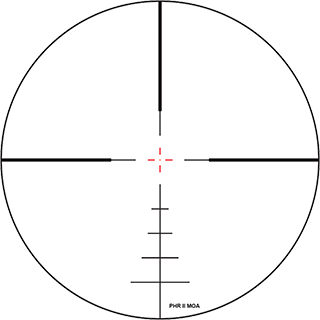
Reticle images courtesy of Zero Tech Optics
Dialable turrets on a hunting scope
Some scopes come with dialable turrets based on your droppage where you zero at 100 yards and set that as your zero, and you can dial your scope based on the bullet droppage for longer ranges. These are great. For example, if you range your game animal at 400 yards, you can turn your dial to 400 yards based on your droppage at 400 yards, and now your scope is zeroed for 400 yards, and when you are done, you dial it back to a 100-yard zero.
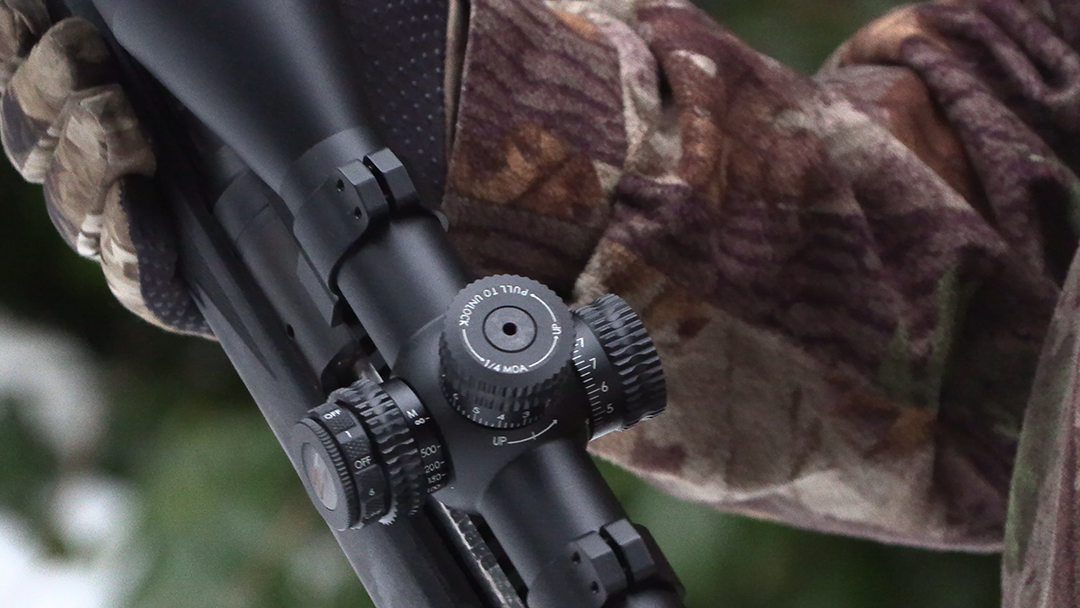
First Focal Plane (FFP) versus Second Focal Plane (SFP) for hunting.
Most hunting scopes are Second Focal Plane. If your scope has a BDC reticle, you must zoom in to the highest setting to use the BDC or do the math to calculate at other powers. Typically, the only time you will use a BDC while hunting is when you are shooting at game over 200 yards, so you will most likely already be zoomed in to the highest power unless you are using a long-range scope over 10x.
First Focal Plane zooms in and out with you, and so does the BDC. That sounds fantastic, right? It is, and it isn't. The reticle, when zoomed out, can be really small and, when zoomed in, can get big obstructing the view. We will soon cover that in our First Focal Plane versus Second Focal Plane blog post.
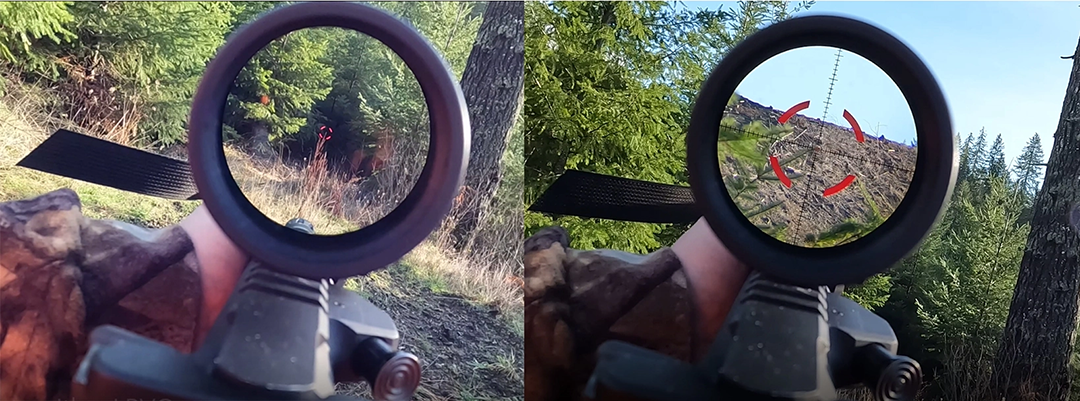
Ultimately, I advise a new hunter shopping for a hunting scope to keep it simple and get the best glass you can afford. If you plan to use your rifle for varmints or other shooting sports, dive into more complex optics.
No matter what scope you get, you want to ensure you have a good-quality scope mount and rings. Warne makes some of the world's best scope bases and rings, made right here in the USA. With over 30 years of specializing in scope mounts and rings, we have engineered them to be stronger than they need to be at an affordable price.

